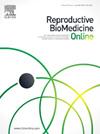DO DNA FRAGMENTATION INDEX AND HIGH DNA STAINABILITY HAVE ANY IMPACT ON FERTILIZATION RATES IN WOMEN UNDER 35 YEARS OF AGE HAVING MALE PARTNERS OVER 40 YEARS OF AGE, UNDERGOING IN VITRO FERTILIZATION AND INTRA CYTOPLASMIC INJECTION?
IF 3.7
2区 医学
Q1 OBSTETRICS & GYNECOLOGY
引用次数: 0
Abstract
Objective
To evaluate if DNA Fragmentation Index(DNA-FI) and high DNA stainability(HDS) effect fertilization rates in couples where the women are at young age and men are at advanced paternal age(1).
Materials and methods
This study was conducted in an international IVF Center in Kyrenia, Northern Cyprus, with retrospective data analysis of 103 IVF/ICSI cycles where embryos were of women <35years and men over 40years of age. The data was searched between January 2022 and July 2024. All procedures were routine standardized procedures performed in the center. The women with previous poor ovarian responses, low antral follicle counts (<7 follicles) and AMH levels below 1.1 ng/ml were excluded. Male partners who used any antioxidants or required intervention for obtaining sperms were not included. The age of woman and male partners were recorded. Sperm Chromatin Structure Assays with the results of total progressive sperm count, progressive sperm motility, Kruger morphology criteria, spermatozoa concentration, spermatozoa viability, live sperms with open acrosomes, total acrosome losses, DNA-FI and HDS levels were evaluated. Short antagonist protocols were used in all patients. M2 oocyte numbers, 2PNs and fertilization rates were analyzed. Fertilization rates were classified in three groups as rates below competency value (<65%), competent value (between 65%-80%) and over benchmark value (>80 %) according to Vienna Consensus(2). Kruger strict criteria were classified as <4 and equal or >4. DNA-FI levels were analyzed if there was any correlation with fertilization rates. The DNA-FI levels were classified into 5groups as; <15,15.1-20,20.1-25,25.1-30 and >30. The sperm high DNA stainability was classified into 4groups as; <7.5, 7.6-10, 10.1-15 and >15.1. The groups were compared in terms of fertilization rates.
Results
There were 103women in the study. The descriptive data were analyzed. There were no azoospermic men as individuals requiring interventions to obtain sperms were excluded from the study. 38.83%(n=40) of men had teratospermia, having less than 4%normal sperm morphology due to Kruger strict criteria. Among all men, 31%(n=32) had increased DNA-FI, but only 1.94%(n=2) of men had increased HDS. There was no significant correlation between DNA-FI levels and fertilization rates. There was no significant difference among DNA-FI levels or HDS levels with fertilization rate groups.
Conclusion
In our study there was no correlation between DNA-FI levels and fertility rates. The DNA-FI and HDS were not affecting fertilization rates in our study group. Couples of <35years old women and >40years of men were selected with sperm parameters including DNA-FI and HDS.Small number of patients is a limitation to our current study. Also, clinical pregnancy rates and live birth rates are missing but they will be included in our further ongoing study.
求助全文
约1分钟内获得全文
求助全文
来源期刊

Reproductive biomedicine online
医学-妇产科学
CiteScore
7.20
自引率
7.50%
发文量
391
审稿时长
50 days
期刊介绍:
Reproductive BioMedicine Online covers the formation, growth and differentiation of the human embryo. It is intended to bring to public attention new research on biological and clinical research on human reproduction and the human embryo including relevant studies on animals. It is published by a group of scientists and clinicians working in these fields of study. Its audience comprises researchers, clinicians, practitioners, academics and patients.
Context:
The period of human embryonic growth covered is between the formation of the primordial germ cells in the fetus until mid-pregnancy. High quality research on lower animals is included if it helps to clarify the human situation. Studies progressing to birth and later are published if they have a direct bearing on events in the earlier stages of pregnancy.
 求助内容:
求助内容: 应助结果提醒方式:
应助结果提醒方式:


